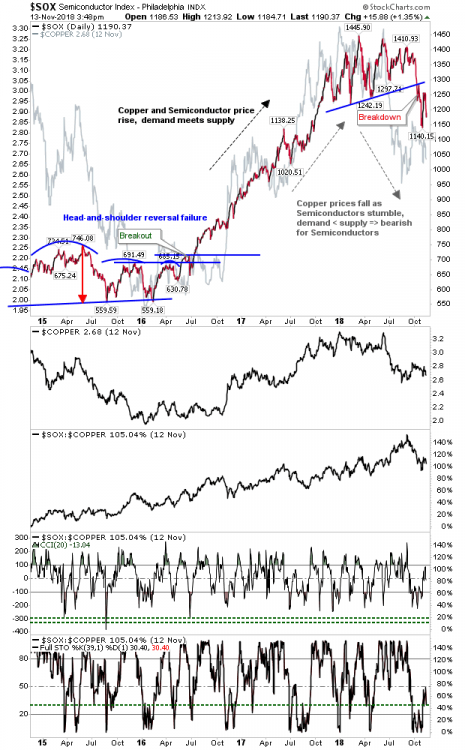
After returning from my brief vacation markets enjoyed decent gains which – over the last 3 days – have given back some of the advances. However, markets remain well positioned to confirm a swing low (even if October lows are breached) and investors should be buying stocks, particularly on days where losses of over 1% or more are registered. Remember, this is buying for 5 years+ down the road – don’t fret the daily noise.
For pessimists, there is the Semiconductor Index and Copper prices. Copper prices broke before Semiconductors as lower demand for the base metal ultimately reflected itself in lower demand for chips, which is hurting and will continue to hurt the Nasdaq and Nasdaq 100. Keep an eye on this chart for a bottom. The likelihood is that more losses are on the cards for both copper and semiconductors.
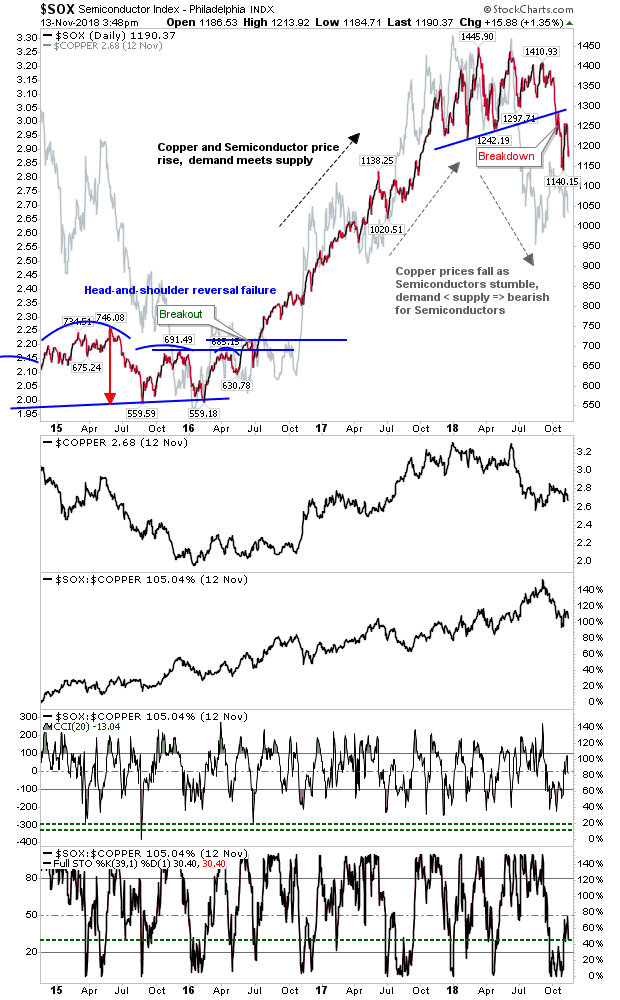
For the Nasdaq, this will likely translate into a retest of October lows. If there is a measured move lower then look for 6,300 as the target. Relative performance remains very weak and is accelerating its weakness – no signs of any positive traction yet.
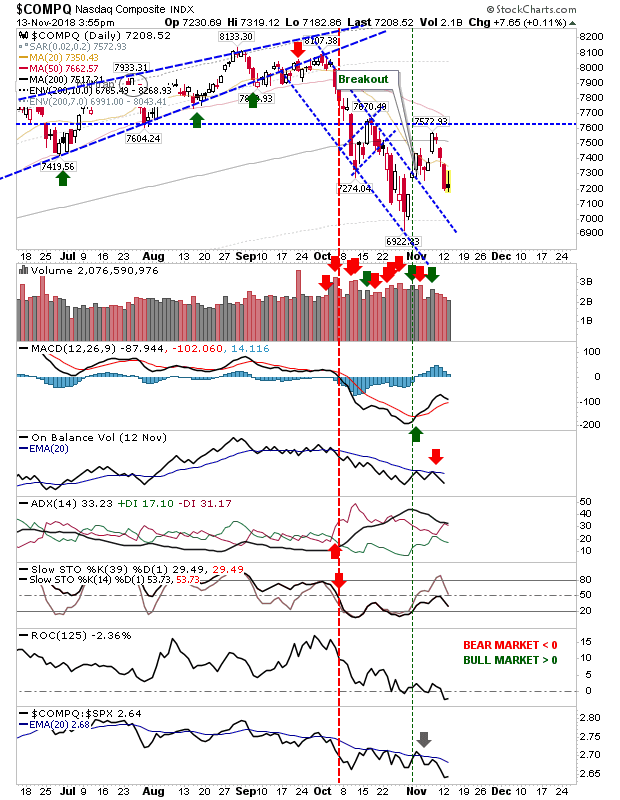
Similar story for the Nasdaq with a downside target of 5,600.
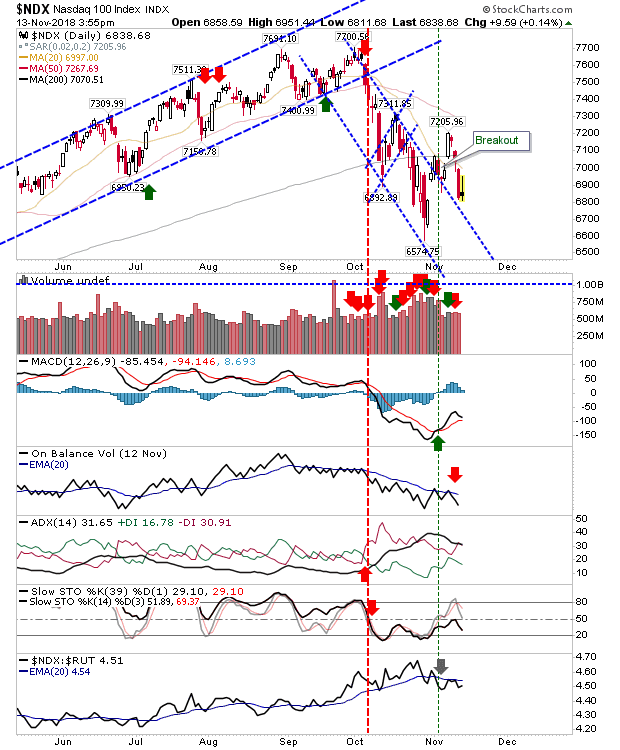
Small Caps suffered hardest over the Fall period but it’s also the index which looks best positioned to rally into Christmas and create a ‘Santa Rally’ as relative performance continues its nascent recovery. Again, true long-term investors take note, ignore the noise and accumulate.
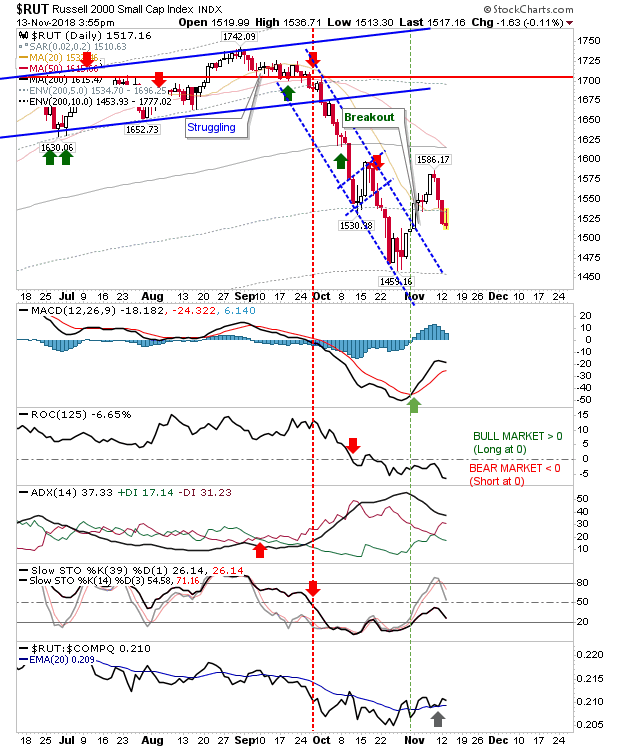
Large Caps have enjoyed their privilege as a defensive sector in recent weeks with steady gains in relative performance. However, neither the S&P or Dow Jones has met the criteria as an investment buy. The largest gains have come from the Dow Jones Industrial average as the November swing high exceeded the October recovery. Not surprisingly, this index has been the relative performance leader since it started its gains in September. Short-term traders may find joy here but best to just watch these.
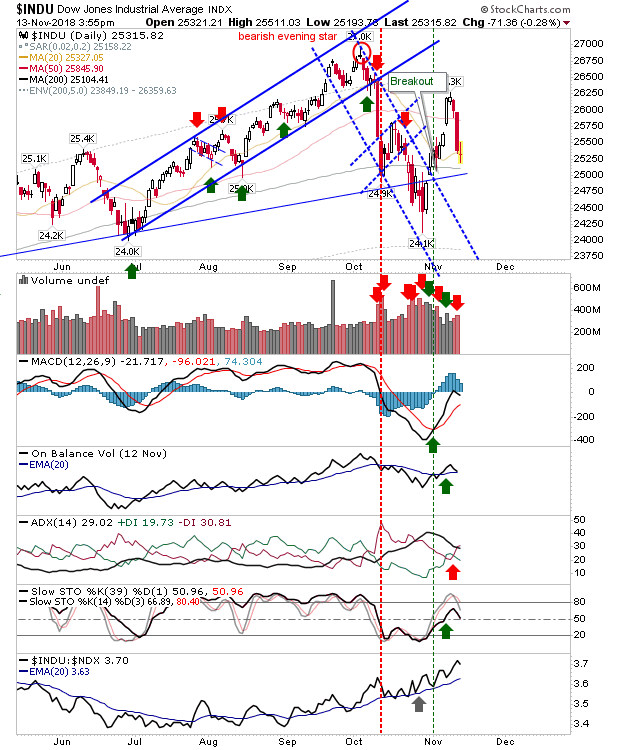
The S&P also has a relative performance advantage, although its gains have not been as wild as for the Dow Jones. More worryingly, ROC (rate-of-change) is moving to a more bearish stance as it flirts with the bearish zero mid-line marker.
















